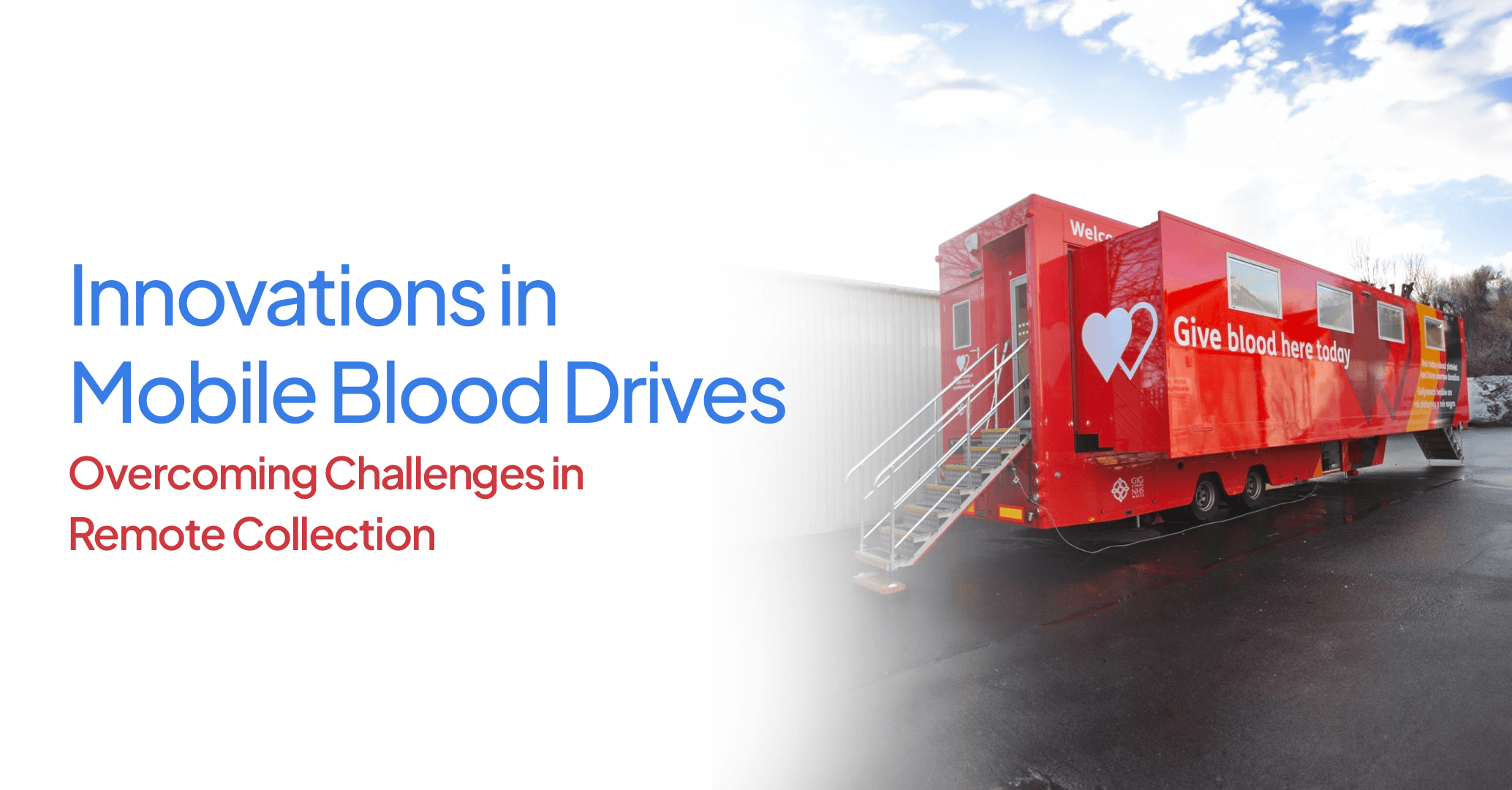Blood donation is a vital part of healthcare systems around the world. Mobile blood drives, where blood collection vehicles visit remote areas to collect blood donations, play a crucial role in maintaining adequate blood supplies. However, running successful mobile blood drives comes with unique challenges not faced by traditional in-house blood collection centers. In this post, we’ll explore some of the key difficulties of mobile blood collection and highlight innovative solutions that are helping drive organizers overcome barriers to remote blood drive success.
The Evolution of Mobile Blood Drives
Mobile blood drives have long been a staple in the healthcare system. Traditionally, these drives involved setting up temporary donation centers in community halls, schools, or workplaces. However, as the demand for blood increases, and as we become more aware of the needs of remote communities, the model of mobile blood drives has evolved. Today, equipped with state-of-the-art technology and resources, these drives are more efficient and effective than ever before.
Bridging the Accessibility Gap
One of the primary challenges in remote blood collection is accessibility. Remote areas often lack the infrastructure and resources needed for traditional blood donation setups. To address this, many organizations have turned to mobile blood collection units – buses or vans equipped with all the necessary equipment for blood donation. These mobile units can travel to remote locations, bringing the opportunity to donate blood directly to the community’s doorstep.
Technological Advancements in Blood Drive Management
The integration of technology in mobile blood drives has been a game-changer. Advanced scheduling systems, donor management software, and mobile health technologies have streamlined the entire process. Donors can now register, schedule their donation, and complete health questionnaires online, reducing paperwork and wait times.
Enhancing Efficiency and Safety
Technology has also played a crucial role in enhancing the efficiency and safety of blood collection. For example, barcode systems ensure accurate tracking of each blood donation, from the donor to the patient who receives it. This improves safety and the efficiency of the blood supply chain.
Overcoming Logistical Challenges
Conducting mobile blood drives in remote areas comes with its own set of logistical challenges. These include transporting equipment, maintaining the right storage conditions for blood, and ensuring the availability of trained staff. Innovations in logistics management have been instrumental in overcoming these challenges.
Innovative Solutions for Storage and Transport
Innovations in refrigeration and transport technology have made it possible to store and transport blood safely over long distances. Portable coolers and temperature-controlled storage units ensure that blood remains at the correct temperature, maintaining its viability for transfusion.
Blood Drive Management: A Key to Success
Effective blood drive management is crucial for the success of mobile blood drives. Blood drive management involves not just the logistical aspect of organizing a drive but also encompasses donor engagement, staff training, inventory management, and data analysis. By leveraging advanced management systems, organizations can optimize their operations, ensuring that every drive is as effective and efficient as possible.
Data-Driven Decision Making
The use of data analytics in blood drive management has allowed organizations to make informed decisions about where and when to conduct drives. By analyzing trends in donor behavior, blood usage, and demographic data, organizations can identify the areas with the highest demand and plan their drives accordingly.
Community Engagement and Education
Community engagement is a pivotal aspect of successful mobile blood drives, especially in remote areas. Educating the community about the importance of blood donation and addressing common myths and fears can significantly increase participation.
Building Trust and Awareness
Trust and awareness are critical in communities that may be unfamiliar with or hesitant about blood donation. Through community outreach programs, educational campaigns, and collaboration with local leaders, organizations can build trust and encourage participation in mobile blood drives.
The Future of Mobile Blood Drives
As we look to the future, the potential for further innovation in mobile blood drives is immense. Emerging technologies like AI and machine learning could offer new ways to optimize blood drive operations and donor matching. Additionally, expanding partnerships with tech companies and healthcare providers can lead to more integrated and efficient blood drive systems.
Embracing a Holistic Approach
The future of mobile blood drives lies in a holistic approach that combines technological innovation, efficient management, and community engagement. By embracing this approach, we can ensure that even the most remote communities have access to safe and timely blood donations.
Closing Thoughts
The innovation and evolution of mobile blood drives are crucial in meeting the growing need for blood donations. Overcoming the challenges of remote collection requires a combination of technological advancements, effective management, and community engagement.
As we continue to innovate and improve these drives, we can look forward to a future where everyone, regardless of their location, has access to this vital resource. The journey towards more accessible and efficient mobile blood drives is ongoing, and the impacts of these innovations will undoubtedly be felt across the global healthcare landscape for years to come.
